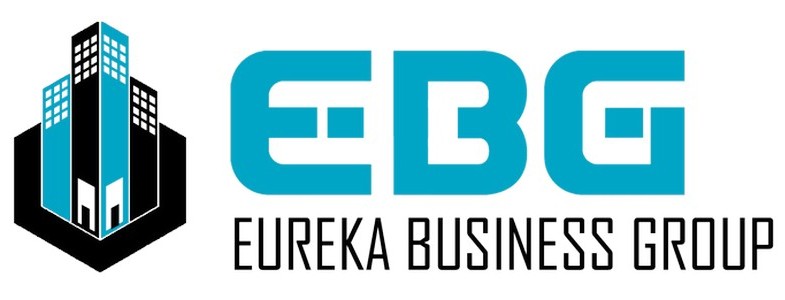- Home
- Industrial
- Industrial Investors Resources
- The Importance of Flexibility in Industrial Real Estate
The Importance of Flexibility in Industrial Real Estate
Industrial real estate, long the backbone of global trade and commerce, is undergoing a period of transformation. The rise of e-commerce, technological advancements, and changing consumer behaviors are all influencing the sector, making adaptability a key factor for success. For investors, developers, and businesses, the importance of flexibility in industrial real estate cannot be overstated. In this blog post, we’ll explore why flexibility is so crucial in today’s market and how it impacts the future of industrial properties.
The Evolving Industrial Landscape
Over the past few decades, industrial real estate has evolved significantly. From the traditional warehouses of the past to modern, multi-functional spaces, the needs of the industrial sector are changing rapidly. Several factors have driven this shift:
E-Commerce Boom: The explosion of online shopping has dramatically increased the demand for warehouse and distribution space. Companies require larger, more efficient facilities to store, package, and ship goods to meet growing consumer expectations for fast delivery.
Supply Chain Disruptions: The COVID-19 pandemic exposed vulnerabilities in global supply chains. As a result, businesses are now seeking more resilient, flexible logistics strategies that can adapt to unforeseen challenges.
Technological Advancements: Automation, robotics, and artificial intelligence are transforming the way industrial facilities operate. These technologies require adaptable spaces that can accommodate changing workflows and technological infrastructure.
Sustainability and ESG: Environmental, social, and governance (ESG) considerations are becoming central to business operations. Companies are increasingly seeking energy-efficient, sustainable industrial spaces that can help them reduce their carbon footprint.
Given these factors, industrial properties must be able to adapt to new demands quickly and efficiently. Flexibility has become a critical asset, allowing properties to remain competitive in an ever-changing market.
Flexibility in Design: The Key to Future-Proofing
One of the most important aspects of flexibility in industrial real estate is the design of the property itself. Flexibility in design allows a building to evolve over time, accommodating a range of uses and tenants. Here are a few key design features that enhance flexibility:
Modular Construction: Industrial facilities built with modular components offer tremendous flexibility. Walls, floors, and ceilings can be reconfigured to create different layouts as needed, making it easy to expand or reduce space based on operational requirements. This is particularly beneficial for warehouses that may need to scale operations in response to changes in demand.
High Ceilings and Open Floor Plans: Industrial buildings with high ceilings and open floor plans can accommodate various types of operations. For example, high ceilings allow for vertical storage, maximizing the use of space for logistics companies. Open floor plans, on the other hand, provide room for heavy machinery, automated systems, or even retail space, if needed.
Multi-Tenant Capability: The ability to house multiple tenants within a single industrial property increases flexibility. Multi-tenant industrial properties are ideal for companies that require smaller, specialized spaces or for businesses that anticipate growing or downsizing in the future. This setup also mitigates risk for property owners, as a diverse tenant base ensures steady rental income, even if one tenant vacates.
Adaptive Infrastructure: Industrial properties with adaptable infrastructure, such as energy-efficient lighting, robust electrical systems, and advanced HVAC systems, are better suited to accommodate the needs of different industries. For instance, a warehouse that integrates sustainable energy solutions like solar panels or LED lighting will appeal to tenants looking to reduce operational costs and adhere to ESG mandates.
Flexibility in Leasing: Meeting Tenant Needs
Flexibility in industrial real estate extends beyond physical spaces to leasing arrangements. Traditional long-term leases may no longer meet the needs of modern businesses, particularly those in fast-moving industries like e-commerce and technology. Offering flexible lease terms allows landlords to attract and retain tenants, while also ensuring that properties remain viable over time.
Short-Term Leases: Many businesses today prefer short-term leases that provide them with the ability to scale up or down quickly based on market conditions. Offering shorter, more flexible lease agreements allows tenants to test new markets, move into emerging spaces, or consolidate operations as needed. For landlords, this may seem risky, but it also opens the door to higher rental rates when demand spikes.
Options for Expansion and Contraction: A lease that allows for the expansion or contraction of space based on a tenant’s needs is highly attractive in today’s dynamic market. Industrial tenants, particularly those involved in e-commerce, often need additional space during peak seasons but may require less during off-peak periods. Offering the ability to adjust the amount of leased space accordingly makes a property much more appealing.
Shared Spaces and Services: Another trend in industrial real estate leasing is the rise of shared spaces and services. Tenants may not require a full warehouse or manufacturing plant but could benefit from access to certain amenities like loading docks, office space, or meeting rooms. Properties that offer shared services and common areas provide flexibility for smaller businesses while maximizing space utilization.
The Role of Technology in Flexible Industrial Real Estate
Technology plays a pivotal role in enhancing flexibility within industrial real estate. As industrial operations become increasingly reliant on digital systems and automated processes, properties must be equipped with the infrastructure to support these advancements. Here’s how technology is driving flexibility in the sector:
Smart Buildings: Smart industrial buildings equipped with Internet of Things (IoT) technology, sensors, and automation systems allow tenants to optimize their operations in real time. These technologies can monitor energy usage, predict maintenance needs, and even manage inventory, providing tenants with the flexibility to respond quickly to changing business demands.
Data-Driven Decision Making: Advanced analytics and big data allow both landlords and tenants to make informed decisions about space utilization, energy efficiency, and overall operational performance. This enables more efficient use of industrial properties, reducing waste and maximizing profitability.
Automation and Robotics: Automation is revolutionizing the way businesses use industrial space. From robotic picking systems in warehouses to automated production lines in factories, tenants need flexible spaces that can accommodate advanced machinery and workflows. Industrial properties with the infrastructure to support automation will be in high demand.
Flexibility as a Competitive Advantage
In today’s competitive industrial real estate market, flexibility is not just a bonus; it’s a necessity. Industrial properties that offer adaptability—whether in terms of physical design, leasing options, or technological capabilities—are better positioned to attract a diverse range of tenants and maintain high occupancy rates.
For landlords and developers, investing in flexible industrial spaces can lead to higher returns in the long run. As tenant needs evolve, properties that can adapt quickly will remain valuable, ensuring steady rental income and a strong competitive position in the market.
On the tenant side, businesses benefit from flexible spaces that allow them to grow, experiment, and pivot in response to market shifts. By choosing adaptable industrial properties, tenants can future-proof their operations and minimize the risk of costly relocations or operational disruptions.
Conclusion
The industrial real estate landscape is changing, and flexibility has emerged as a key driver of success. From modular design and adaptive infrastructure to flexible leasing terms and the integration of cutting-edge technology, industrial properties must evolve to meet the demands of modern businesses. By prioritizing flexibility, both landlords and tenants can thrive in an increasingly dynamic market, staying ahead of the curve and ready to adapt to whatever the future holds.
As we move into the future, the ability to pivot, innovate, and adapt will set the best industrial properties apart, making flexibility not just an advantage but a necessity in this fast-paced sector.



